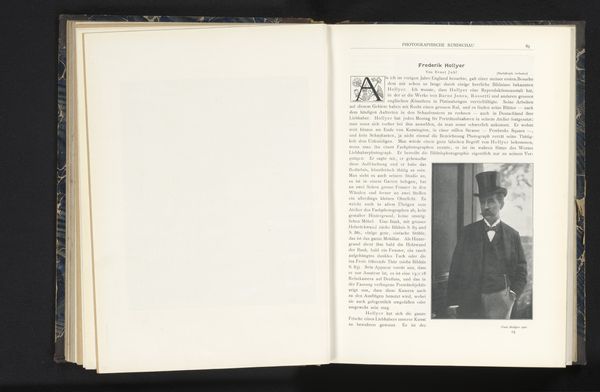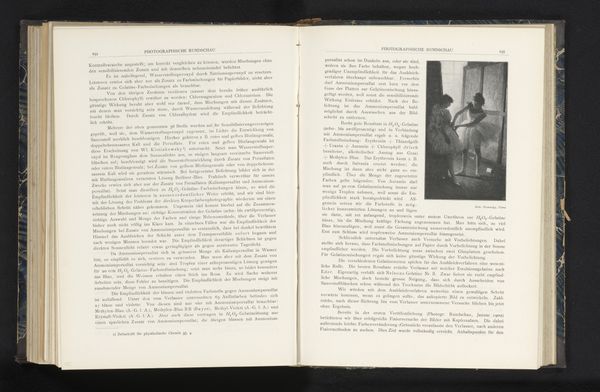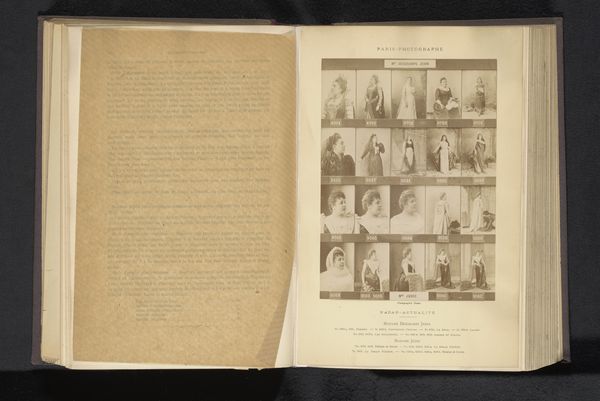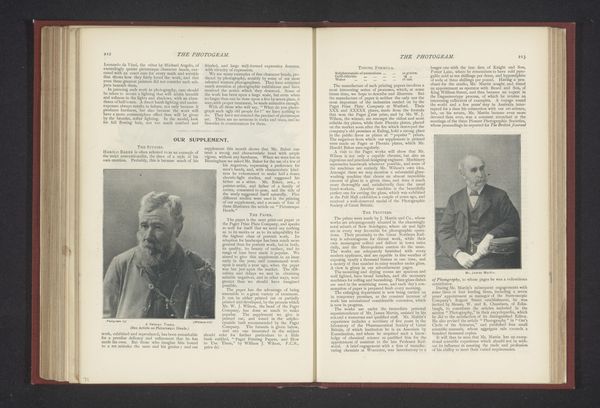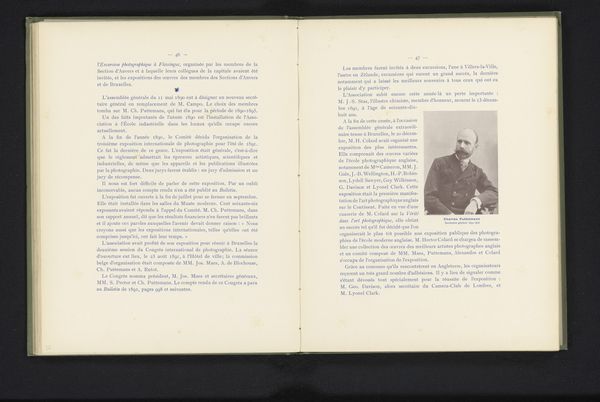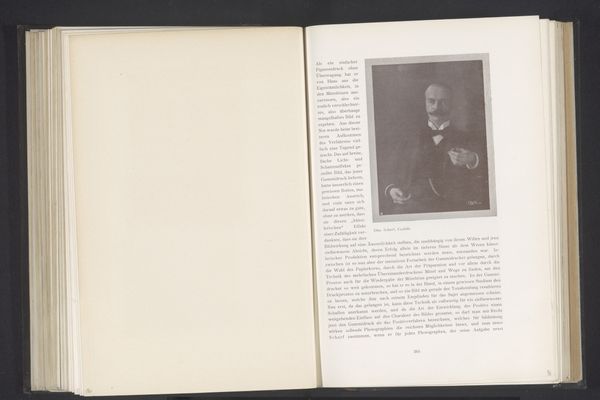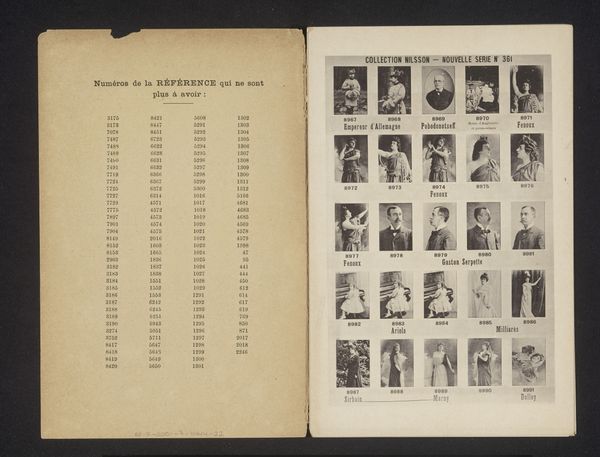
print, paper, photography
# print
#
paper
#
photography
Dimensions: height 240 mm, width 316 mm
Copyright: Rijks Museum: Open Domain
Curator: Here we have a printed page, entitled "Portretten," dating from around 1912 to 1915. The piece presents a series of photographic portraits arranged on what appears to be a larger document, possibly a publication. Editor: It’s interesting how the images, though small, possess a rather solemn, almost stoic presence. The monochromatic tones emphasize the textures and the subjects' austere expressions. It feels very… formal. Curator: Absolutely. It is important to note the original context; it's clearly a reproduction within a broader printed matter concerning early aviation, specifically Zeppelins, as one of the portraits is of Graf Zeppelin himself, and is titled Bild Nr 32. Consider that printmaking here is deployed not for artistic expression, per se, but for disseminating information. These images serve to document individuals integral to this burgeoning technological moment. Editor: Still, there's an undeniable artistry in the composition. Look at the contrast between the sharp details of the faces and the blurred backgrounds. The framing emphasizes the subjects' presence, each neatly presented. Even within the context of mass production, the photographer captures something profound. Curator: Indeed. But consider the process. The photos likely underwent various stages of reproduction: original photograph, halftone printing block, and then finally, ink on paper. Each step inevitably alters the image, introducing a degree of mediation. This contrasts sharply with, say, a contemporary fine art print, where the artist controls every aspect of production. Here, utility and mass dissemination take precedence. Editor: But aren’t you overlooking the materiality of the paper, the ink, the very physical presence of the print? These materials, arranged in this way, are conveying something. The grid format and placement creates patterns. Semiotics play out visually. Curator: Semiotics are indeed present. Consider that these materials had distinct meanings related to industry, innovation, even warfare during the pre-WWI era. Editor: Very well. On the one hand, these "Portretten" serve a practical purpose, documenting and disseminating information. On the other hand, we're still looking at curated objects with strong emotional tones conveyed by a chosen visual style. Curator: I concede that. Considering the socio-economic contexts, it gives us a compelling framework to analyze. Editor: It is nice to delve into the layers within it and appreciate not just its surface qualities but the deeper dialogues about artistry, representation and its creation contexts.
Comments
No comments
Be the first to comment and join the conversation on the ultimate creative platform.
